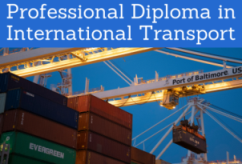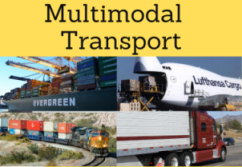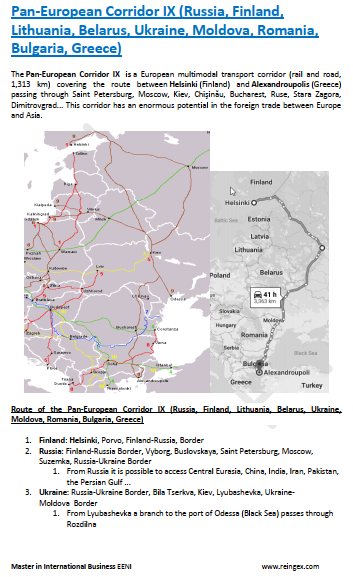Trans-European Transport Network Corridors

North Sea-Baltic Corridor, Mediterranean (European Transport Network)
- Introduction to the Trans-European Transport Network Corridors of the EU
- Main features of the Trans-European Transport Network Corridors
- Main European Transport Corridors
- Atlantic Corridor (Portugal-Germany)
- Baltic-Adriatic Corridor (Poland, Slovenia)
- North Sea-Baltic Corridor (Finland, Belgium)
- North Sea-Mediterranean Corridor (Ireland, France)
- Mediterranean Corridor: Spain, France, Northern Italy, Slovenia, Croatia, Hungary
- Eastern Europe-Eastern Mediterranean Corridor: Germany, Czech Republic, Hungary, Romania, Bulgaria, Greece, Cyprus
- Scandinavian-Mediterranean Corridor: Finland, Sweden, Denmark, Germany, Austria, Italy
- Rhine-Alpine Corridor: Netherlands, Belgium, Germany, Switzerland, Italy
- Rhine-Danube Corridor: Germany, Austria, Slovakia, Hungary, Romania, waterway
- Strasbourg-Danube Corridor: Strasbourg, Mannheim, Frankfurt, Wurzburg, Nuremberg, Regensburg, Passau, Wels / Linz, Vienna, Budapest, Arad, Brasov, Bucharest, Constanza, Sulina
- Member countries of the Trans-European Transport Network Corridors
- Countries in the influence area of the Trans-European Transport Network Corridors
- Pan-European Corridors:
- Pan-European Corridor II (Russia-Germany)
- Pan-European Transport Corridor III (Berlin, Kiev)
- Pan-European Corridor IV (Germany, Austria, Greece, Czech Republic, Slovakia, Hungary, Romania, Bulgaria and Turkey)
- Pan-European Corridor VII (Danube, inland waterway)
- Pan-European Corridor VI (Czech Republic, Poland, Slovak Republic)
- Pan-European Corridor IX (Finland-Greece)
- Pan-European Corridor X (Salzburg, Ljubljana / Graz, Zagreb / Budapest, Belgrade, Nis, Sofia / Skopje, Thessaloniki / Florina)
- Europe-Caucasus-Asia Corridor
- Afghanistan-Turkey Corridor
- Islamabad-Istanbul Corridor
- Trans-Caspian Corridor

The Subject “Trans-European Transport Network Corridors” belongs to the following Online Programs taught by EENI Global Business School:
Courses: EU International Relations, Export to the EU, European Single Market.
Logistics Courses: Road, Railway, Maritime, Air, Multimodal.

Diploma: International Transport.

Masters: International Transport International Business.
Doctorate: Global Logistics, European Business, World Trade.
Masters adapted for  EU Students.
EU Students.
Languages:  .
Summary in
.
Summary in  Corredores de Transporte Europeos
Corredores de Transporte Europeos
 Corridors de transport européens
Corridors de transport européens  Corredores de Transporte Europeos.
Corredores de Transporte Europeos.


The EU Member Countries (Germany, Austria, Belgium, Bulgaria, Croatia, Cyprus, Denmark, France, Slovakia, Slovenia, Spain, Estonia, Finland, Greece, Hungary, Ireland, Italy, Latvia, Lithuania, Luxembourg, Malta, the Netherlands, Poland, Portugal, the Czech Republic, Romania and Sweden) have:
- Five million km of paved roads
- 215,000 km of railway lines
- 41,000 km of inland waterways
- 329 large seaports
- 325 large airports
Through the Trans-European transport network policy, the EU aims to build an effective transport infrastructure network across the EU. This policy addresses the implementation and development of a European network of rail lines, highways, inland waterways, sea routes, ports, airports and railway terminals. The ultimate goal is to close gaps, eliminate bottlenecks and technical barriers, as well as strengthen social, economic and territorial cohesion in the EU.
European regional economic communities related to the Trans-European Transport Network Corridors.
- The EU
- European Single Market
- Economic and Monetary Union
- EU Services Directive
- European Digital Single Market
- European Customs Union
- European Economic and Social Committee
- European Investment Bank
- European External Action Service
- Neighbourhood Policy
- Euro-Mediterranean Partnership
- Eastern Partnership
- South Caucasus
- Western Balkans
- EU Customs Code
- Black Sea Synergy
- Adriatic-Ionian Initiative
- EU Agreements with Algeria, Ivory Coast, South Africa, South Korea, India, Mexico, MERCOSUR, Chile, Egypt, Jordan, Lebanon, Ukraine, Moldova, Georgia etc. besides the Customs Union with Turkey
- Africa-EU Partnership
- Organization for Cooperation between Railways (OSJD)
- Central European Initiative
- Council of the Baltic Sea States
- Adriatic-Ionian Initiative
- UNECE
- Regional Cooperation Council
Corridors related to the New Silk Route
- Bangladesh-Myanmar Corridor
- Asia-Africa Corridor
- Almaty-Bishkek Corridor
- China-Central-Western-Asia Corridor
- China-Pakistan Corridor
- Nanning-Singapore Corridor
- India-Afghanistan Corridor
- Trans-Siberian Railway (Russia, North Korea)
- International North-South Corridor
- China-Russia Corridor
- Corridor of the Ashgabat Agreement
The main religion of the region is Christianity.
The Trans-European Transport Network Corridors belongs to the:
(c) EENI Global Business School (1995-2024)
We do not use cookies
Top of this page



